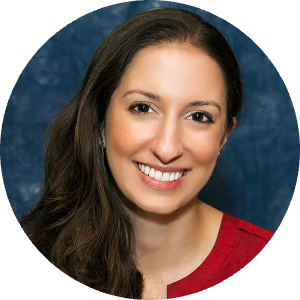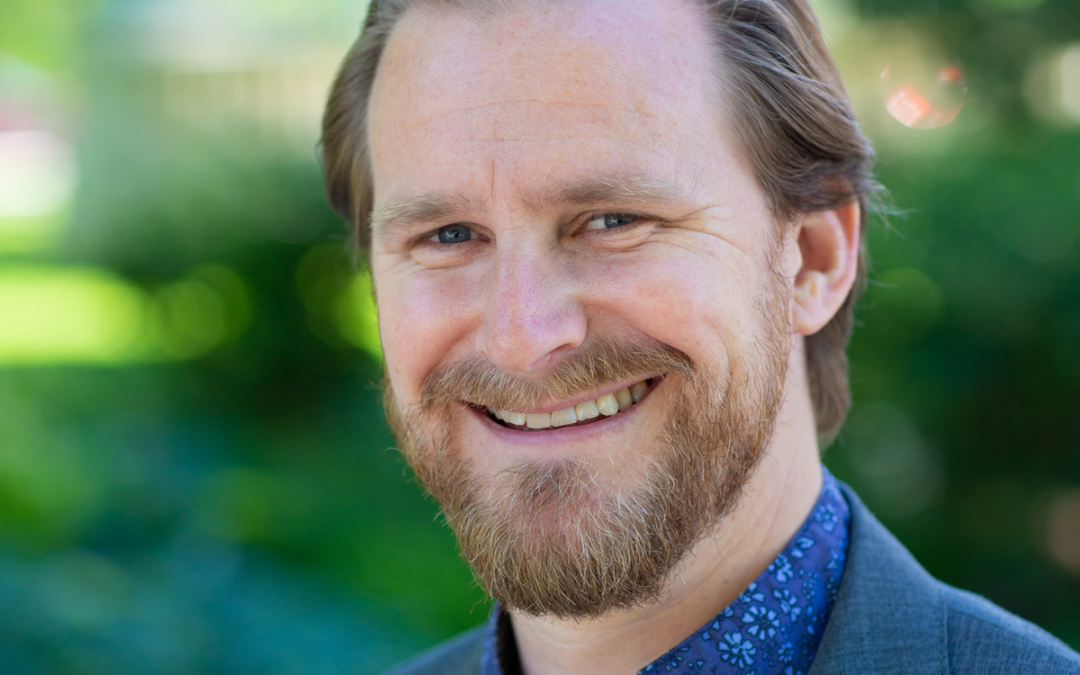
by Julia Holzschuh | Aug 1, 2023 | Uncategorized
August 1st is National Andrew Day! RENEW sat down with our Andrew for the occasion.
Q: Hey, Andrew, when do you first hear about August 1 being ‘National Andrew Day’?
A: Just now, when you told me.
Q: Now that you know, what do you think?
A: I’m a bit perplexed that I hadn’t heard about it before, to be honest. But mostly just stoked to be part of something bigger than me.
Q: So, you work on energy policy with RENEW Wisconsin. What’s that like?
 A: Every day, I’m hustling for renewable energy in Wisconsin; it’s great! We educate, collaborate, and advocate – all good things. It’s something I’m passionate about, so it has been very fulfilling work. I also get to bring my dog, Mocha, into the office, and that makes everything better.
A: Every day, I’m hustling for renewable energy in Wisconsin; it’s great! We educate, collaborate, and advocate – all good things. It’s something I’m passionate about, so it has been very fulfilling work. I also get to bring my dog, Mocha, into the office, and that makes everything better.
Specifically, I’m very proud of my collaborative work on our Zero Carbon Cost Benefit Analysis Report and Wisconsin’s Roadmap to Net Zero by 2050 Report.
Q: Tell us more about you, though; what it’s like to be an Andrew?
A: Oh, you know, ups and downs, strikes and gutters, little of this, little of that. Probably not much different from being a George or Tom or whatever.
Q: Do you go by Andrew, Drew, Andy, or what’s your preference?
A: Whatever’s clever, I guess. By default, I say Andrew. Andy is cool, though. I went by Andy as a kid, but there’s a whole story there.
Q: Go on…
A: Well, my birthname was Andrew, but my folks called me Andy, which I think makes sense. You don’t want to patronize your son by calling him Andrew right out of the womb. You might as well adopt a British accent and say, ‘Does Sir Andrew want two lumps of sugar with his tea, or just one?’ So yeah, Andy made sense for the time and place. And I probably would have wanted three lumps because I was a baby, and tea is bitter.
Fast forward to middle school, and everyone started calling me by my surname, Kell, that is. Through high school and college I was pretty much just known as “Kell.” When I went to college, several high school friends went to the same college as me, and that trend just continued, for better or worse. A few professors called me Andy, but everyone else was like, ‘Kelldawg, what’s up?’
I’m not gonna bore you any further, but I think I bucked the whole ‘Kell’ thing sometime after college. Instead of introducing myself as Andy, I went with Andrew. Sounds a bit more sophisticated, right? I mean, I was now the holder of a Bachelor of Arts degree in English, But that’s all ancient history now, and I’m ok with Andy or Andrew. I wouldn’t mind a Drew here and there, either. Maybe I should start introducing myself as Drew just for funsies.
Q: Well, ok, wow, that’s fascinating. Anyway, have you met many other Andrews in your time on this great planet of ours?
A: Yes, a ton. You know, I never came across that many until I moved to Madison. And now it’s like you can’t throw a stone without hitting an Andrew.
When I worked at the PSC, I think they had an Andrew quota or something. There was like five to ten Andrews at any given moment when I was there. I labeled affectionately myself ‘Andrew #9’. I tried to adopt the ‘nanu-nanu’ greeting from Mork and Mindy as the official Andrew greeting while I was there, but I don’t think any of the other Andrews were as enthusiastic as I was.
Anyway, maybe I can find a pub full of Andrews on Aug 1 and kick-start that greeting nationwide this year. That’s my hope, at least. Just happy to be part of something bigger than me.
Q: Any parting words of wisdom?
A: Yeah, if you see me out on August 1, buy me a drink! I promise to tell a tale of one of my great Andrew adventures, and the words of wisdom I’m sure will flow. You won’t be disappointed.
Oh, and if a petition comes across your desk to make this an ‘International Andrew Day,’ please sign on that dotted line.
With proper planning and policies in place, Wisconsin can follow this roadmap and reap the benefits of a zero-carbon future. This is just the start of a dialog on how Wisconsin can get to zero carbon emissions.
Andrew Kell
Policy Director, RENEW Wisconsin
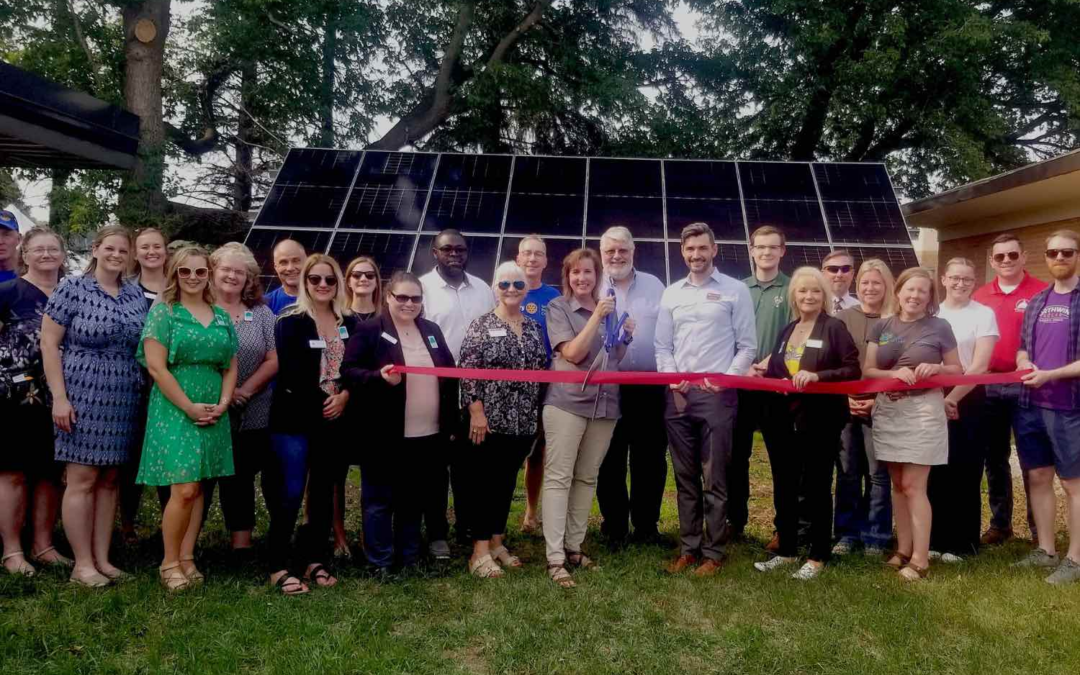
by Lauren Cohen | Jul 25, 2023 | Solar, Solar for Good
On Monday, July 24, The Rotary Club of Greater Portage County hosted a solar dedication ceremony to celebrate the completion of The Salvation Army Hope Center solar project. It will provide clean energy, reduce energy costs, and reinforce the Hope Center’s mission to provide secure and safe housing for the temporarily displaced and homeless in Stevens Point.
The Rotary Club of Greater Portage County selected the Salvation Army Hope Center solar project in alignment with Rotary International’s newly created Environmental Sustainability Area of Focus. The project will not only educate the community on the benefits of solar energy but benefit Stevens Point in a way that aligns with the Rotary’s mission. Thanks to this project, the Hope Center will be able to focus more resources on its work to provide shelter and warm meals for those in need.
“The Salvation Army Hope Center Solar Project was conceived as a way to increase community awareness of the environmental benefits of solar electric power while enhancing the Salvation Army’s resources to provide lodging and meals to families in need,” said Richard Zahn, Grants and International Team Lead of the Rotary Club. “Completion of the project has been a true collaboration with funding and support provided by three major grant partners, community donations, and local Rotarians.”
Northwind Solar installed the 7-kilowatt ground-mounted array, which is expected to produce 9,000-kilowatt hours of energy annually. This will offset around 15% of the Salvation Army Hope Center’s electrical demand.
“We are thrilled at Northwind to be able to provide renewable energy to an organization that serves the community,” said Dylan Jenkins, Project Manager with Northwind Solar. “We are always happy to help reduce the carbon footprint of our neighbors, and doing so with an establishment that’s dedicated to helping others is extra special.”
The Hope Center Solar Project received funding through various sources, including a panel donation from Solar for Good, a District Rotary grant, a Community Foundation of Central Wisconsin grant, and several individual donations. The combined support from these partners demonstrates the collective commitment to create a sustainable and thriving community.
By harnessing the power of solar energy, The Rotary Club of Greater Portage County and the Salvation Army Hope Center remain dedicated to driving positive change in the community while encouraging environmental stewardship. The success of this project stands as a testament to the transformative impact that can be achieved through collaborative efforts and a dedication to a cleaner and more sustainable future.
By harnessing the power of solar energy, The Rotary Club of Greater Portage County and the Salvation Army Hope Center remain dedicated to driving positive change while encouraging environmental stewardship. The success of this project stands as a testament to the transformative impact that can be achieved through collaborative efforts and a dedication to a cleaner, more sustainable future.
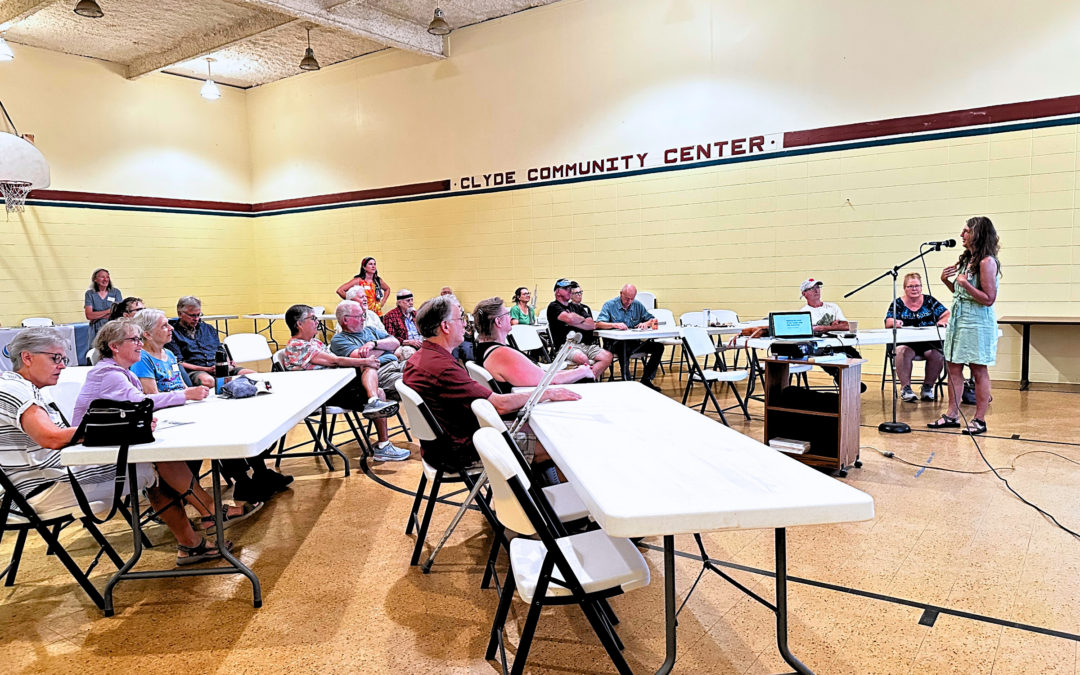
by Lauren Cohen | Jul 25, 2023 | Solar, Solar for Good
On Sunday, July 16, The Clyde Community Center hosted a dedication to celebrate and commemorate the completion of their 8-kilowatt solar array. Formerly an elementary school, the Clyde Community Center’s mission is to foster community by providing a space for Avoca, WI, residents to host programs or participate in recreational activities.
The ground-mounted solar array is projected to produce 10,000-kilowatt hours of annual energy, offsetting 100% of the community center’s current usage. This transition to solar power is just the first step in the Clyde Community Center’s long-term vision of implementing energy-efficient upgrades.
“Our former grade school means a lot to the residents of our township as a public gathering place, but it needs upgrades,” said Juniper Sundance, Solar Champion of the Clyde Community Center.
Planned upgrades include replacing and adding insulation, installing energy-efficient lighting, and replacing the classroom air conditioning units and wall furnaces with heat pumps. These improvements will optimize the solar system’s performance by minimizing energy waste and ensuring the community center maximizes its renewable energy potential.
This project was made possible through various financial rebates and grants, including an $11,500 Focus on Energy Rebate and a $1,200 grant from Solar for Good. Clyde Community Center also received several donations from its community members.
The Clyde Community Center solar project can be largely accredited to the town’s residents who already use solar to power their homes and understand how beneficial additional solar would be for their community. “Living in an area without much infrastructure, we are aware of our need for sustainable systems,” said Sundance. “We see a potential for educating our neighbors on solar.”
The involvement of Clyde residents serves as a powerful testament to the idea that people are far more likely to install solar when they see someone they know and trust already using it successfully. This solar installation is another example for others within the township to follow.
Clyde Community Center’s solar installation demonstrates the organization’s commitment to the environment as well as its residents. By installing this system, the center can continue serving the town for years to come.
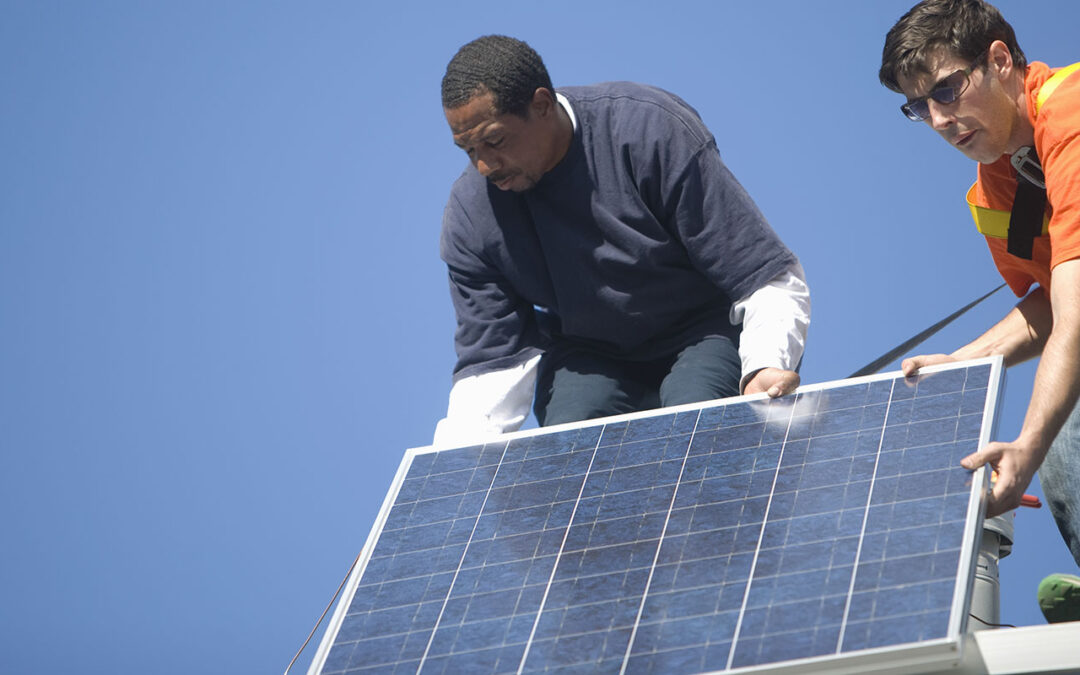
by Alex Beld | Jul 19, 2023 | Electrification, Solar, Utilities
Energy Concepts LLC (Energy Concepts) has requested a waiver of individual electric metering requirements for the Prairie Heights Residences, a multifamily residence under development in Eau Claire. The petition presented to the Public Service Commission of Wisconsin (PSCW) seeks this waiver to simplify the integration of high-performance building insulation, electrically powered Variable Refrigerant Flow (VRF) heat pump technology, and onsite solar into this new apartment building.
The development team—Gerrard Companies (developer), West CAP (property operator/manager) and Energy Concepts (energy system designer)—are collaborating to achieve significant reductions in overall building energy usage, minimizing tenant exposure to high energy costs. Meter consolidation is crucial to optimize the cost-effectiveness of these energy measures and pass these savings to tenants in the form of avoided utility payments.
The development team is specifically seeking to waive Wis. Admin. Code 113.0803 for the project. The Wis. Admin. Code 113.0803 states that any residential building constructed after March 1, 1980 with multiple units will be required to have a separate electric meter for each unit. This extends to any residential building with multiple units that undergoes renovations after March 1, 1980.
Allowing meter consolidation for this project is key for the implementation of the two solar arrays planned for the new apartment building. The grid-tied solar photovoltaic arrays will produce 350kW, and though it will be tied directly to the main electrical grid it’s likely only a small percent of the system’s output will be exported onto the grid, due to the relatively constant energy requirements of a building-wide VRF heat pump system
Electrically powered VRF heat pump technology is designed to provide both heating and cooling using the same equipment. Heat pumps also transfer heat rather than converting it from a fuel source, which allows properly installed systems to deliver as much as three times more heat energy to a home than the electrical energy it consumes. When paired with renewable energy, as in this case, heat pumps are a particularly effective solution for reaching decarbonizing goals.
The technologies planned for the affordable housing development are relatively new and were unavailable to developers when the individual electric metering requirements were created under Wis. Admin. Code 133.0803. These requirements are an economic hurdle for projects like the Prairie Heights Residences and removing this hurdle allows the developer to simplify the installation of their solar arrays. Rather than connecting an array, or in this case arrays, to 60 individual units the waiver will allow for the arrays to be connected to a single meter.
The array is expected to supply 20% of the electricity estimated to be consumed by residences in both their individual units and shared spaces. Pairing the array with the high-performance insulation and an electric heat pump, which will heat and cool the building, it is expected that tenants will experience an exceptionally efficient heating and cooling system that further insulates them from high energy bills commonly experienced with traditional heating and cooling systems.
The development team’s use of tax credits and incentives, combined with these energy-saving, CO2-reducing measures to build new affordable housing is particularly innovative. It will significantly reduce the energy burden on the low to moderate income residents the project is for. West CAP plans to reserve 85% of its 60 units for tenants at or below 60% of the median county income, with 12 units specifically reserved for homeless or disabled veterans.
RENEW Wisconsin believes the approach taken by the Prairie Heights project team to incorporate energy savings and CO2 emissions reductions in new multifamily housing is exemplary and should serve as a model for other development groups. We have submitted comments in support of the waiver and are watching the case closely. The comment period remains open to the public through July 25, 2023.
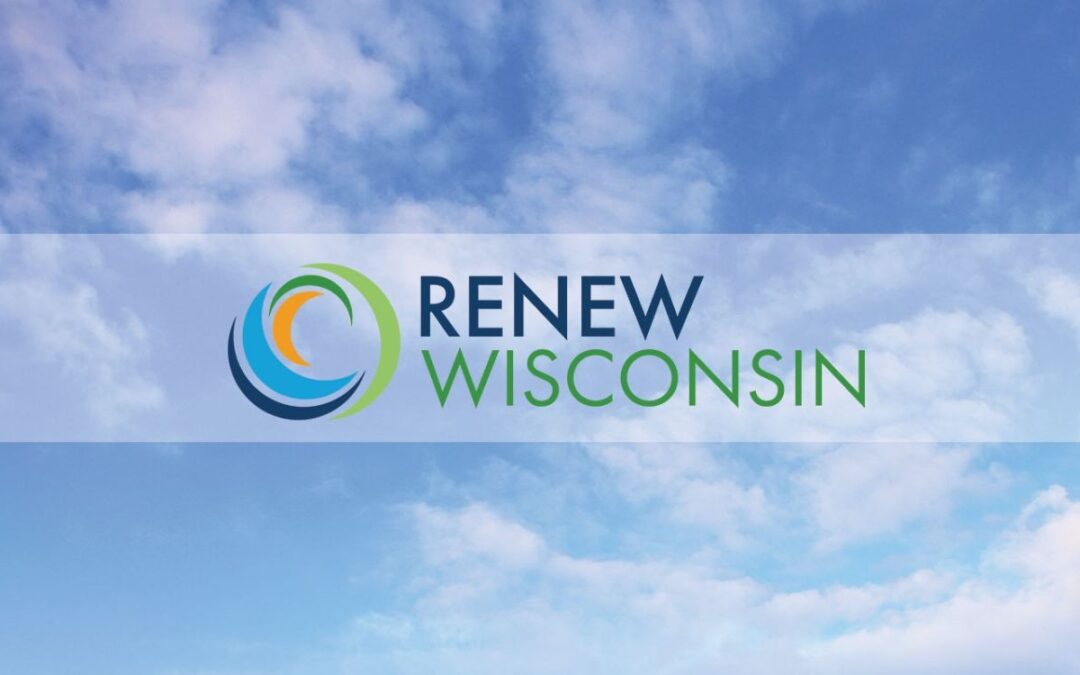
by Alex Beld | Jul 14, 2023 | Community, RENEW Wisconsin
Thank you to all members who voted in our 2023 Board of Directors Election. RENEW Wisconsin’s Board of Directors plays an important role in setting the strategic vision for the organization. All dues-supporting members of RENEW Wisconsin were invited to vote in this year’s Board of Directors election.
This year’s election results include three incumbent board members, Josh Stolzenburg, Alicia Leinberger, and Eric Udelhofen, and two newly elected board members, Michael Troge and Victoria Soloman. All will soon begin a three-year term, helping us advance renewable energy in Wisconsin.
MEET OUR NEWLY ELECTED BOARD MEMBERS
VICTORIA SOLOMAN
I am honored to join the RENEW Wisconsin Board of Directors. I’m highly interested in this organization and position because I understand that RENEW is a leader on advancing clean energy in Wisconsin. I want to support taking such action now for current and future generations across all of Wisconsin.
Areas where I seek to add value to the RENEW Board of Directors:
● Building bridges through education and facilitating common ground. In my role at UW-Madison Division of Extension, I am part of a cross-programmatic team working in communities across Wisconsin on climate change. I have experience with government, multi-sector leadership, and deliberative dialogue on topics such as climate change.
● Connection with diverse networks. Every day I work with decision-makers across sectors in rural, suburban, and urban communities. I work with community leaders across sectors, races, cultures, languages, geography, educational level, and political perspective at local, state, and national levels.
● Planning, measuring, and communicating. I am a certified planner with organizational, county, and regional planning experience. Additionally, as an associate professor, I evaluate my current educational programming using a variety of tools to tell the story of my educational and research work. This is consistently effective in connecting with the community across diverse sectors and perspectives
MICHAEL TROGE
My introduction to RENEW was at the 1999 MREA energy fair. Little did I know this would change the course of my career. It’s been a fascinating ride full of ups and downs. The technologies are innovative, and the people are inspiring.
It’s taken a while to find my niche in the industry. I’m fortunate to work for Oneida Nation, allowing me and the Energy Team the flexibility to build a concept that has led to PV & solar-thermal installs, a variety of energy studies, climate preparation, and most recently the planning and design of the Oneida Nation Health Campus Resiliency Project featuring a microgrid with 2 MW horizontal tracking array and 6 MWh BESS. I value working with an Indian Tribe that has a progressive nature driven by a history of hardship. Tribes across the country are so different, but they’re all reaching for the same thing – their sovereign right to thrive. Energy is a big part of that.
I’m proud to be a founding board member of the Midwest Tribal Energy Resources Association (2014) devoted to Tribal energy development. It’s grown to 20 member-Tribes. As a RENEW Wisconsin Board Member, I intend to continue to build those connections that encourage all organizations to partner toward a responsible energy future.
RENEW also recently welcomed Tonyisha Harris to our board, filling a mid-term board vacancy.
TONYISHA HARRIS
I am absolutely honored to join the RENEW Board of Directors.
As a member organization and communications point of contact of the Clean Economy Coalition of Wisconsin (CECW), I have the pleasure of collaborating with RENEW on advancing clean energy in Wisconsin. Working with Jodi Jean Amble and occasionally Sam Dunaiski is an amazing opportunity to learn the landscape and best communication practicies that resonate with Wisconsinites. Sending a video to the RENEW Summit was an awarding experience and I’m glad to have been invited to represent young people at the summit.
Areas where I seek to add value to the RENEW Board of Directors:
● Education: I led student-run campaigns at Loyola University Chicago, including but not limited to “A Place at the Table,” a campaign geared towards making environmental organizations and activism more diverse and inclusive to students of color and non-environmental science/studies majors.
● Communications: As the Associate Director of Communications and Partnerships at ACE, I
excel at writing communications that resonate with young people, especially those with marginalized backgrounds and identities. This experience is critical to diversifying the membership and audience of RENEW.
RENEW BOARD OF DIRECTORS
Josh Arnold • Madison, WI
Mike Barnett • Madison, WI
Mike Cornell • Hartland, WI
Jim Funk • Winneconne, WI
Samara Hamze • Stevens Point, WI
Tonyisha Harris • Chicago, IL
Alicia Leinberger • Viroqua, WI
Mariah Lynne • Albert Lea, MN
Lauren Reeg • Boulder, CO
Amy Seeboth-Wilson • Platteville, WI
Victoria Soloman • Monticello, WI
Josh Stolzenburg • Wausau, WI
Michael Troge • Seymour, WI
Eric Udelhofen • Madison, WI
Ken Walz • Madison, WI
Don Wichert (DIRECTOR EMERITUS/Lifetime/Non-voting) • Madison, WI
Thank you for participating in the election and using your voice to help shape RENEW’s future! And thank you to all candidates who offered their expertise and time to help our organization grow and thrive.
RENEW Wisconsin
RENEW Wisconsin holds elections for our Board of Directors every year. If you or someone you know would like to be considered for our next election, please complete the short form linked below. Racial diversity and inclusion are a priority in our organization, and we strongly encourage people of color and other underrepresented groups to join us in advancing renewable energy in Wisconsin.
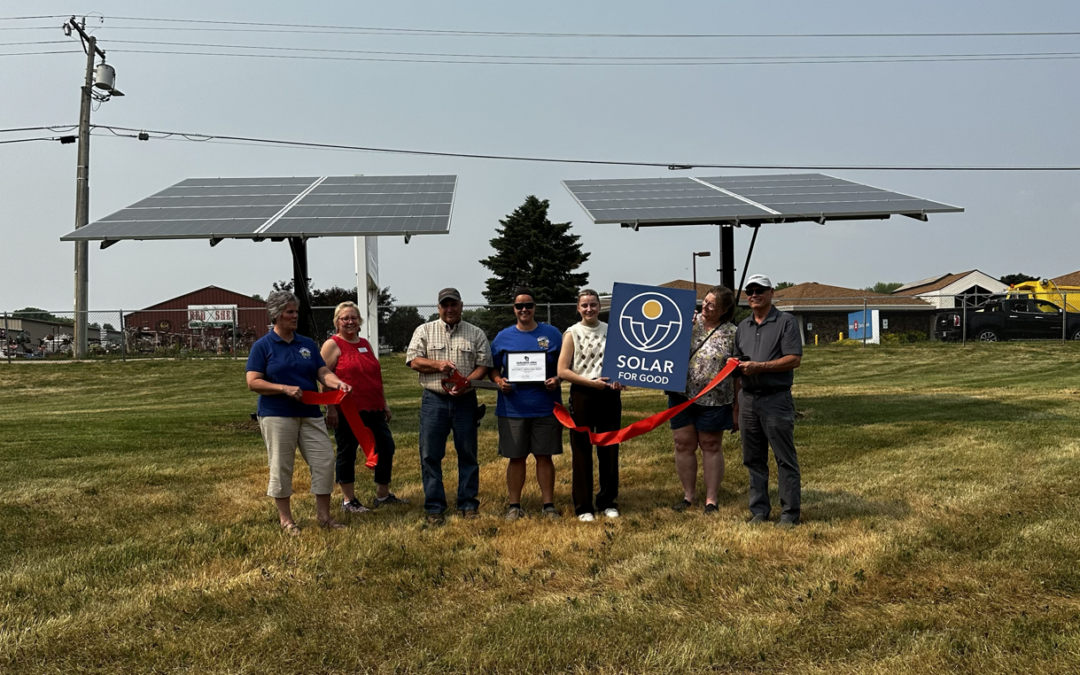
by Lauren Cohen | Jun 29, 2023 | Programs, Solar, Solar for Good
On Wednesday, June 13th, The Friends of the Sauk County Fairgrounds hosted an event to celebrate the completion of their 19-kilowatt solar array. The Friends of Sauk County Fairgrounds is a nonprofit whose mission is to help fundraise and support the preservation of the historic Sauk County Fairgrounds.
Located in the City of Baraboo, the 24-acre Sauk County Fairgrounds is now home to two solar arrays, totaling 52 panels. These installations, completed by All Sky Energy, are projected to generate over 26,000-kilowatt hours of electricity annually. By doing so, they will contribute to a 43% reduction in the fairgrounds’ yearly electric utility costs.
Steeped in a rich history spanning more than 150 years, the Sauk County Fairgrounds remains home to several original structures, a testament to their enduring legacy. These fairgrounds hold immense significance as a venue for historical preservation. While the COVID-19 pandemic disrupted their usual lineup of events, it also presented an opportunity for the Sauk County Fair to prioritize cost-saving measures, ensuring its continuation for another 150 years.
For the youth community in the region, the Sauk County Fair has served as a valuable educational resource, imparting knowledge about the vital role of agriculture. “By installing solar energy, we are showing a continued commitment to providing a safe venue for our youth to develop these skills, a long-term solution for cost savings, and the importance of helping save the environment at the same time,” said Amy Bible, treasurer of the Friends of the Sauk County Fairgrounds.
The Friends of the Sauk County Fairgrounds received funding from various organizations, including Focus on Energy and Solar for Good. Solar for Good, a program initiated by RENEW Wisconsin and the Couillard Solar Foundation, aims to promote and support solar power among mission-based nonprofits in Wisconsin. The collaborative efforts of these organizations have enabled the realization of these solar installations.
The Sauk County Fair prides itself on its inclusive nature, welcoming families of all income levels to explore the grounds at no cost. The installation of these solar arrays will not only contribute to preserving the fair’s legacy for future generations but also serve as a powerful symbol of environmental stewardship and technological progress for the residents of Sauk County.
The funds saved through this sustainable initiative will be redirected towards public education initiatives on agriculture and the preservation, maintenance, and upkeep of the fairgrounds’ century-old buildings and grounds. This forward-thinking approach ensures that the fair will continue to serve as a beacon of heritage, knowledge, and enjoyment for years to come.
Completing these solar arrays at the Sauk County Fairgrounds marks a momentous achievement in their mission to preserve and promote the historic fairgrounds. Through installing these solar arrays, the Friends of the Sauk County Fairgrounds are embracing sustainable practices and demonstrating their commitment to providing a safe venue for youth development, achieving long-term cost savings, and fostering environmental responsibility. This project is proof of the combined efforts of different organizations and highlights the long-lasting importance of the Sauk County Fair. It ensures that future generations can still enjoy its fascinating history and everything it provides.
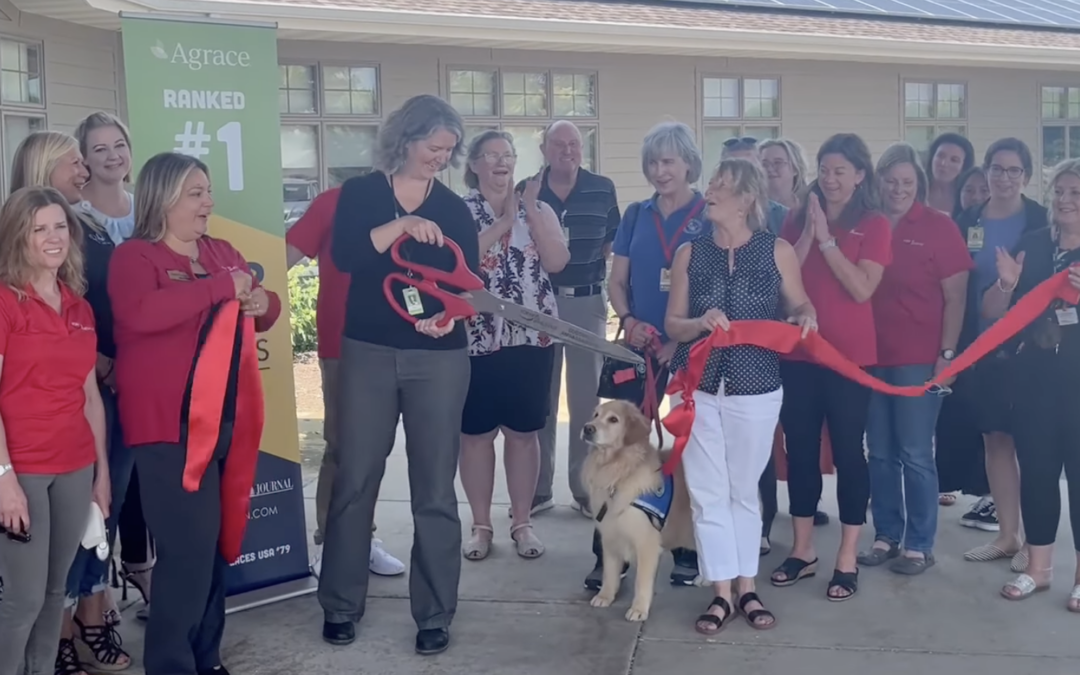
by Lauren Cohen | Jun 29, 2023 | Programs, Solar, Solar for Good
On Tuesday, June 20th, Agrace Hospice Care commemorated the completion of its 87-kilowatt solar array with a ribbon cutting. Founded in 1978, Agrace Hospice Care is a nonprofit whose mission is to provide personalized care and support for life’s changing health needs.
Installed by Full Spectrum Solar, their 212-panel solar system is projected to produce 343,481 kilowatt hours annually, offsetting 31% of the organization’s annual usage. This solar system is just one aspect of Agrace’s plan for carbon neutrality by 2025. “There are absolutely financial savings that we will begin to enjoy a decade from now, but that’s not high on our reasons for doing this,” said Lynn Sexten, CEO of Agrace. “Making sure our services are available to anyone, regardless of their ability to pay, means we’re making sure we’re being a good corporate citizen, a good community partner, and helping to further cleaner air in our local communities.”
This project was made possible thanks mainly to Focus on Energy incentives and a Solar for Good grant. Created in partnership with the Couillard Solar Foundation, RENEW Wisconsin’s Solar for Good program provided Agrace Hospice Care with a $10,000 grant to use toward their solar project.
As a nonprofit, Agrace strives to allocate as many resources as possible to direct caregiving and community services. The funds saved through this solar project will be reinvested in Janesville and other areas, ensuring the continued provision of exceptional care to those in need. By embracing solar energy and other initiatives that reduce its carbon footprint, Agrace sets an example for sustainable practices within its organization and the wider community.
To achieve their ambitious carbon-neutral goals, completing the solar array at their Janesville facility is just the beginning of Agrace’s commitment to renewable energy. They also have plans to install a solar array at their Madison facility, further emphasizing their dedication to environmental stewardship. Agrace aims to raise awareness about the positive impact of solar power on reducing operational costs, allowing for increased investment in patient care and community programs for years to come.
By embracing solar energy, Agrace demonstrates its determination to minimize its carbon footprint and allocate resources where needed most. As they continue expanding their renewable energy initiatives, Agrace paves the way for a brighter and more sustainable future for their organization and the communities they serve.
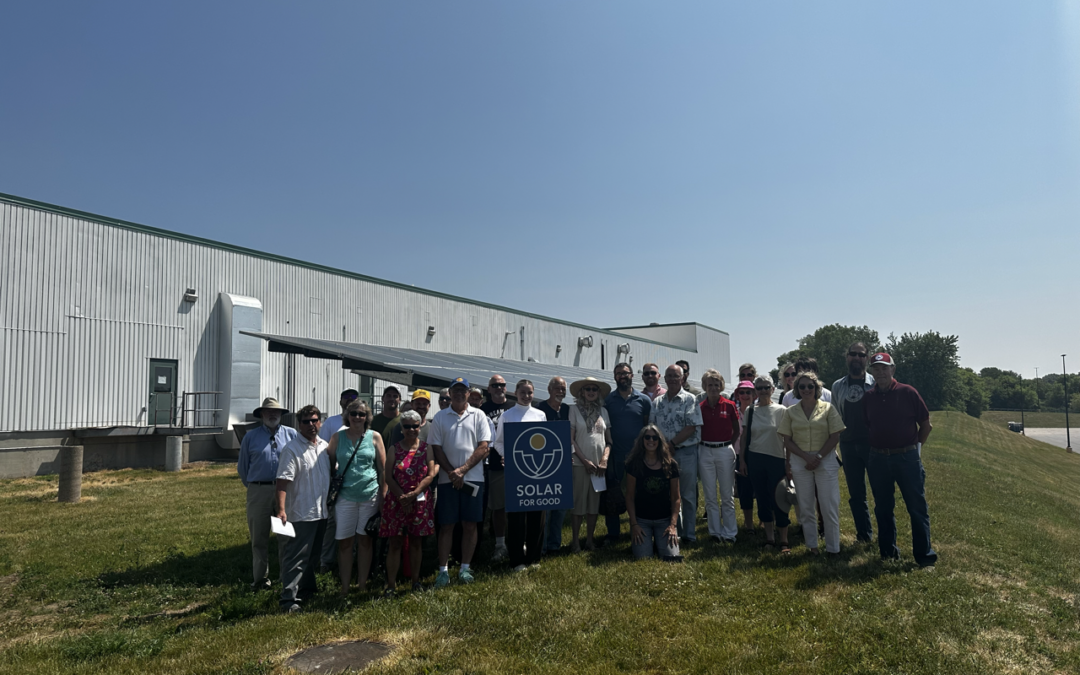
by Lauren Cohen | Jun 29, 2023 | Programs, Solar, Solar for Good
On Tuesday, June 20th, Vernon Economic Development Association (VEDA) celebrated the completion of their 100-kilowatt solar array. Vernon Economic Development Association is a nonprofit that is dedicated to strengthening its community through economic development by bringing state and federal resources to its region.
The 180-panel ground-mounted array, designed and installed by Ethos Green Power Cooperative (EGPC), was installed on the Food Enterprise Center and is projected to produce nearly 130,000 kilowatt-hours annually, offsetting approximately 60% of the shared space usage.
“The electricity generated supports our common areas that serve small tenant businesses and refrigeration coolers produce and dairy produce storage for VEDA’s Community Hunger Solutions Program, which brings nutritious food to community members who lack access,” said Susan Noble, Executive Director of VEDA. This solar project is a critical part of our sustainability plan and a long-term solution fostering a stronger, more stable community.”
Several grants made this project possible, including Focus on Energy, Solar Moonshot, the BQuest Foundation, Associated Bank, GoMacro, Vernon Communications, EGPC Community Power Program, and individual community member donations.
VEDA also received a grant from Solar for Good, a RENEW Wisconsin program created in partnership with the Couillard Solar Foundation to help nonprofits go solar. Solar for Good awarded the organization half of the solar panels needed for their project.
This solar project will save the organization valuable dollars, which can then be reinvested into its mission and community. “It is clearly a powerful investment which will save $300,000 in electricity costs over 25 years that can be put towards other operations and helping more businesses grow,” said Mike Breckel, president of VEDA’s Board of Directors.
“Being able to utilize and demonstrate solar power to the community and the region is consistent with our mission to create sustainable economic growth that increases the prosperity and well-being of the people of this region while protecting and enhancing the area’s unique environment, which is the foundation of our rural lifestyle and quality of life,” continued Noble.
With over 20 businesses located at the Food Enterprise Center, this solar array will have a wide-reaching impact on its tenants and customers. Installations like VEDA highlight the long-term economic benefits of renewable energy investments. As a well-known and well-respected organization in their region, this solar installation will be an example to other community members.
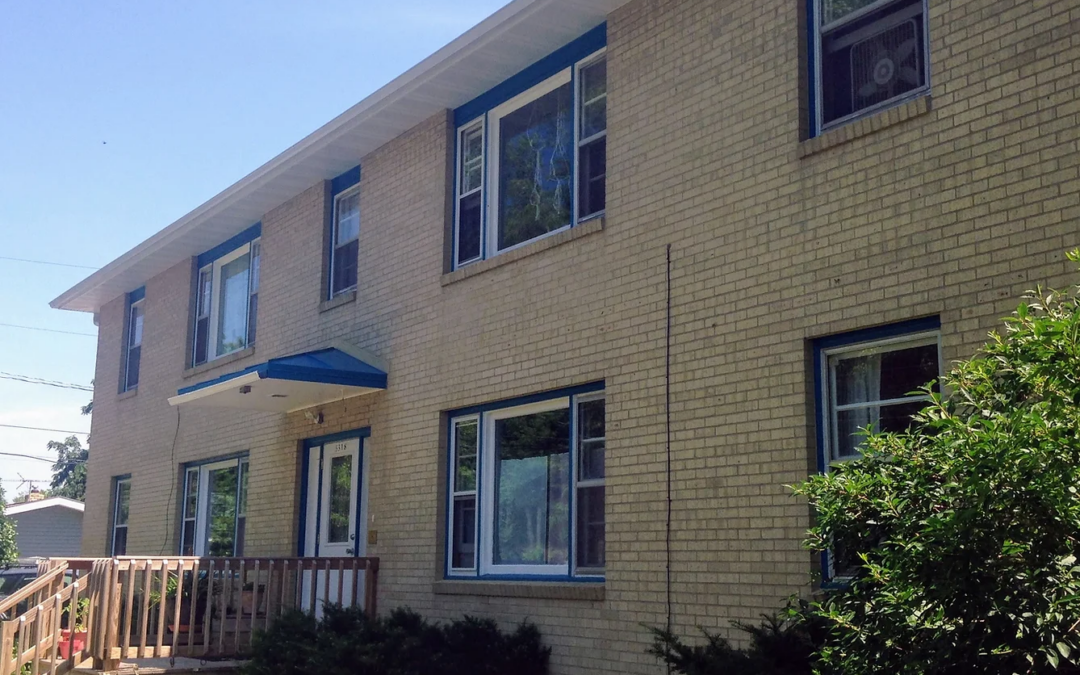
by Lauren Cohen | Jun 29, 2023 | Programs, Solar, Solar for Good
On Friday, June 15, RENEW Wisconsin joined Madison Area Cooperative Housing Alliance (MACHA) to celebrate the completion of their 14.4-kilowatt solar array, made possible in part by MadiSUN Backyard Solar and Solar for Good grants. MACHA is a nonprofit organization that seeks to promote resilience and equity in the Madison area by supporting the continuation and creation of cooperative housing.
This solar system was installed by Full Spectrum Solar and is projected to offset 97% of the building’s electricity usage for Perennial Co-op’s 11-person house, ensuring long-term affordability for its residents. The cooperative house will benefit from reduced utility bills by leveraging solar energy.
The installation was made possible through the support of several grants and incentives. The MadiSUN Backyard Grant, a program that awards grants to Madison-based nonprofits, awarded MACHA $9,725. In addition, MACHA also received a grant from Solar for Good, a program whose mission is to foster solar expansion among Wisconsin nonprofits. MACHA also received funding from Focus on Energy and loan support from Greenpenny.
The completion of this solar array comes at a critical time within the Madison housing market. “With housing costs in Madison increasing, more and more people are priced out of the housing market,” said Steve Vig, Secretary with MACHA. “Cooperative housing ensures long-term affordability, as does the transition to renewable energy infrastructure such as solar. Perennial Co-op sets an example for long-term affordability, climate-resiliency, and multi-generational living.”
Madison Cooperative Housing Alliance plans to use Perennial Co-op’s solar array as an example that other similar organizations can replicate. “We hope that Perennial Co-op’s new solar array can serve as a model for other cooperative houses in Madison,” said Gabrielle Hinahara, MACHA Board Member. “MACHA would be excited to collaborate with more co-op houses interested in installing solar. These projects are a win-win because they contribute to our community’s environmental sustainability and provide long-term financial sustainability for our cooperative houses, which often house residents with modest incomes.”
The completion of this solar array marks a significant milestone for promoting resilience, affordability, and sustainability in the Madison housing market. With housing costs rising, cooperative housing, coupled with renewable energy infrastructure, presents a solution for long-term affordability and sustainability. With this installation completed, other organizations have a laid-out path to follow suit, fostering an environmentally and economically viable community for Madison residents.

by Michael Vickerman | Jun 29, 2023 | Solar, Utilities, Utility Scale
Wisconsin electric providers added significantly more renewable energy content to their electricity supplies in 2022, according to a June 2023 report issued by the Public Service Commission. Overall, renewable energy accounted for 16.2% of Wisconsin electricity sales in 2022, increasing more than two percentage points from the 13.8% level recorded in 2021.
Renewable energy performance varied widely among individual electric providers. At the high end, Northern States Power-Wisconsin (Xcel-NSPW) reported that 44.5% of the electricity it sold in 2022 came from renewable energy sources (see Table 1). Though making up only 10% of Wisconsin electricity sales, Xcel-NSPW accounts for nearly 27% of the state’s total renewable electricity supply. Most of the utility’s added renewable energy supplies came from wind power projects in Minnesota and the Dakotas.
Wisconsin Power and Light (Alliant-WPL) also posted healthy gains in 2022, rising from 20.2% in 2021 to 24% last year. Indeed, of the 11.3 million megawatt-hours (MWh) of renewable energy sold in Wisconsin in 2022, about one-half of that total (5.7 million MWh) flowed through either Xcel-NSPW or Alliant-WPL to their customers.
Under the state’s Renewable Portfolio Standard (RPS), electric providers must track their renewable energy sales from the previous year and provide those results to the Public Service Commission. The 2022 results are retrievable from the Commission staff memo issued in Docket 5-RF-2022, specifically Appendices D and E of PSC REF#: 470111. These annual reports also compile renewable electricity provided through utility renewable energy tariffs, such as community solar offerings.
The PSC’s RPS reports break down aggregate renewable power totals by resource and state of origin. Imports from other states accounted for nearly two-thirds of total renewable electricity sales (64% vs. 36%). In 2022, wind projects generated 74% of the renewable electricity sold in Wisconsin, followed by hydro (14%), solar (7%), and biomass (4%). Moving in with greater granularity, wind power originating from out-of-state sources accounted for 59% of total renewable energy sales, followed by in-state wind (15%), in-state hydro (10%, and in-state solar (6%).
The percentage of out-of-state wind generation relative to total renewable electricity sales has increased dramatically since 2017, rising from 48% to 59%.
Tracking individual utility performance
In the wake of utility commitments to substantially reduce carbon emissions by 2030 and reach net zero emissions by 2050, these compliance reports take on added importance in tracking electricity provider progress in meeting their goals. Table 1 below shows that while some utilities, such as Xcel-NSPW and Alliant-WPL, have responded quickly to the challenge, others, such as We Energies, have made little headway. As documented by these annual reports, the volume of renewable MWh sold to We Energies customers has declined since 2017.
Bear in mind that We Energies, the state’s largest electric utility, accounts for about one-third of total electric sales in Wisconsin (23.5 million MWh out of 69.9 million MWh). Of that total, only 1.46 million MWh, or 6.2%, were generated from renewable resources. While We Energies derives a significant portion of its electricity supply from the Point Beach Nuclear power plant (8.7 million MWh in 2022), it will be no small undertaking to acquire solar capacity quickly enough to overcome the lackluster results of recent years.
We Energies owns approximately 30 MW of the 1,000 MW of solar generating capacity presently operating in Wisconsin. Though its first two major solar investments—Badger Hollow 2 (50 MW) and Paris (150 MW)—are expected to commence operations in the fourth quarter of this year, their output won’t deliver a noticeable boost to We Energies’ renewable energy content until 2024, which will be reflected in the Commission’s 2025 RPS report. We Energies’ share of Badger Hollow 2 and Paris should generate 400,000 MWh/year, equivalent to 1.7% of We Energies’ 2022 sales.
We Energies will need to greatly accelerate the pace of their generation transition to become 20% renewably powered by 2030, effectively tripling the 1.46 million MWh recorded in 2022.
In contrast, 69% of the electricity supplies serving Xcel Energy’s Upper Midwest territory came from carbon-free sources in 2022, according to its corporate sustainability report. (Note: the 69% number includes output from Xcel Energy’s two nuclear power units in Minnesota). By 2030, the percentage of carbon-free generation is expected to rise to 81%. The report also states that, by 2029, coal generation will no longer supply Xcel’s Upper Midwest territory, including NSPW.
This spring, Xcel-NSPW committed to purchasing the output from the Apple River solar farm in Polk County, adding 100 MW of solar power and 100 MW of storage capacity to its generation portfolio. Developed by National Grid Renewables, Apple River should be online sometime in 2025.
And by July 2024, Alliant-WPL will have completed and placed in service close to 1,100 MW of solar generating capacity in Wisconsin, which will account for 20% of that utility’s sales in the Badger State.

 A: Every day, I’m hustling for renewable energy in Wisconsin; it’s great! We educate, collaborate, and advocate – all good things. It’s something I’m passionate about, so it has been very fulfilling work. I also get to bring my dog, Mocha, into the office, and that makes everything better.
A: Every day, I’m hustling for renewable energy in Wisconsin; it’s great! We educate, collaborate, and advocate – all good things. It’s something I’m passionate about, so it has been very fulfilling work. I also get to bring my dog, Mocha, into the office, and that makes everything better.




